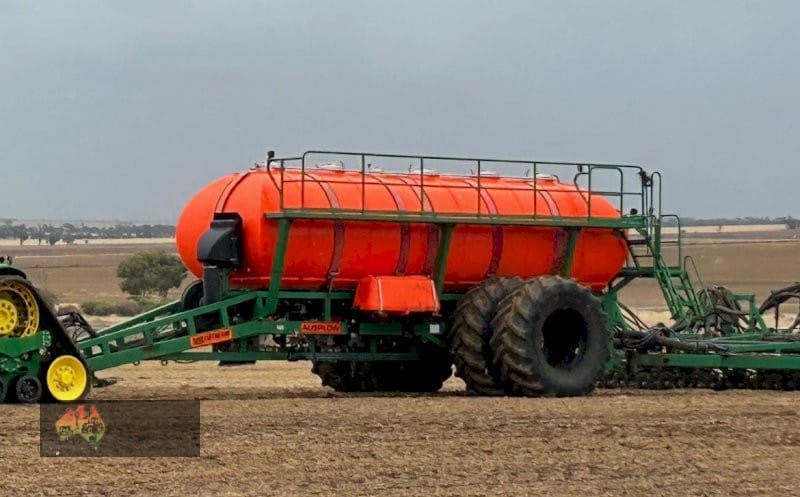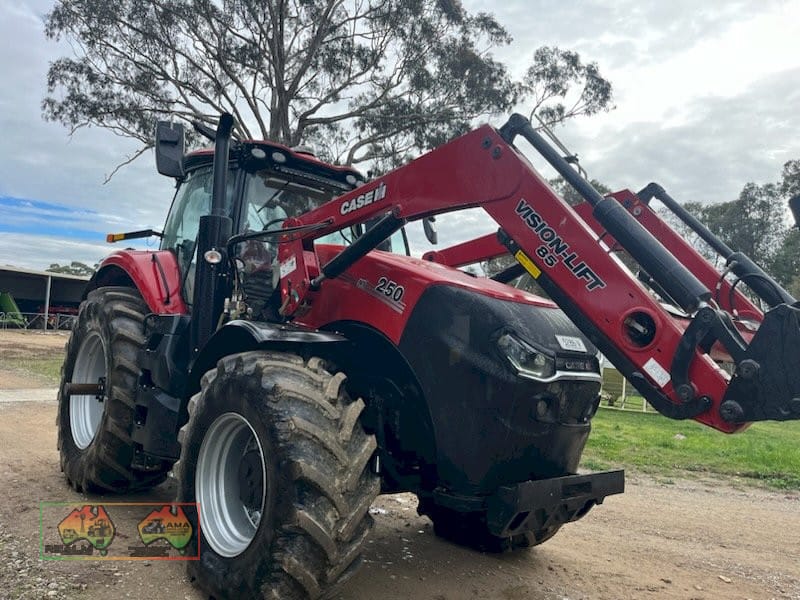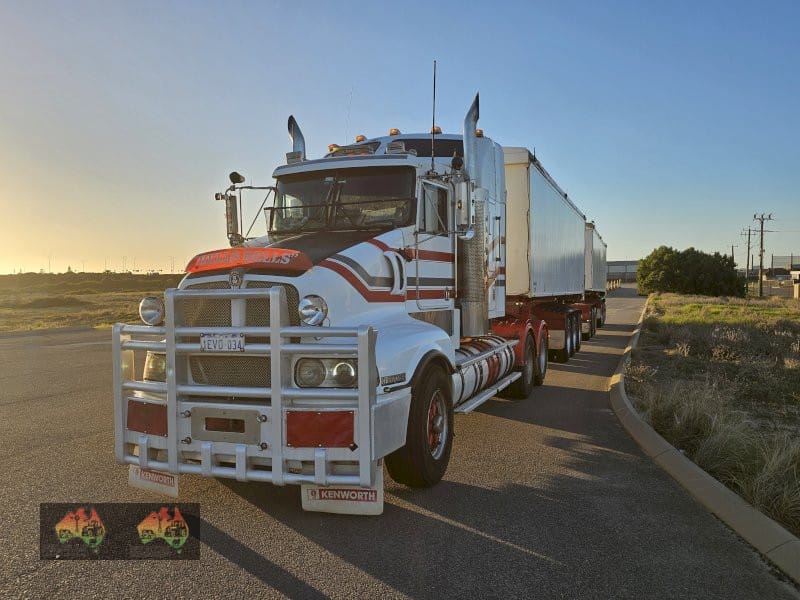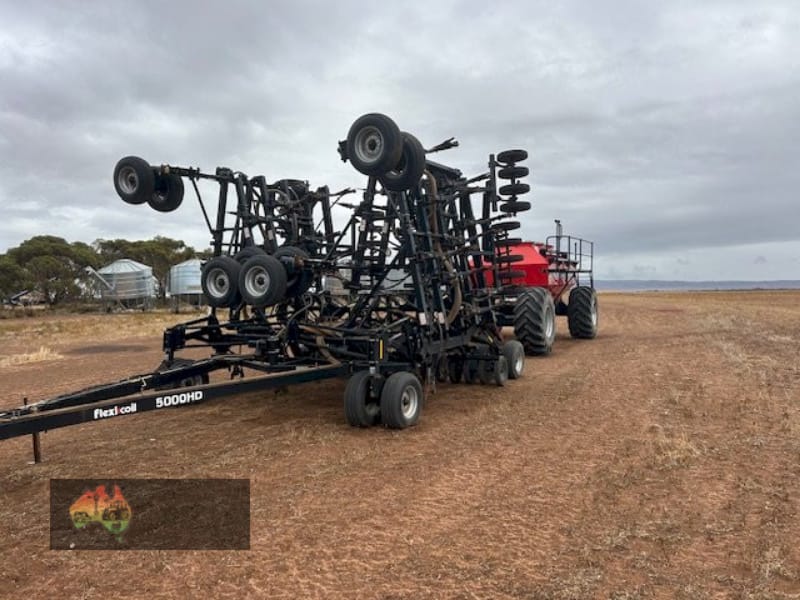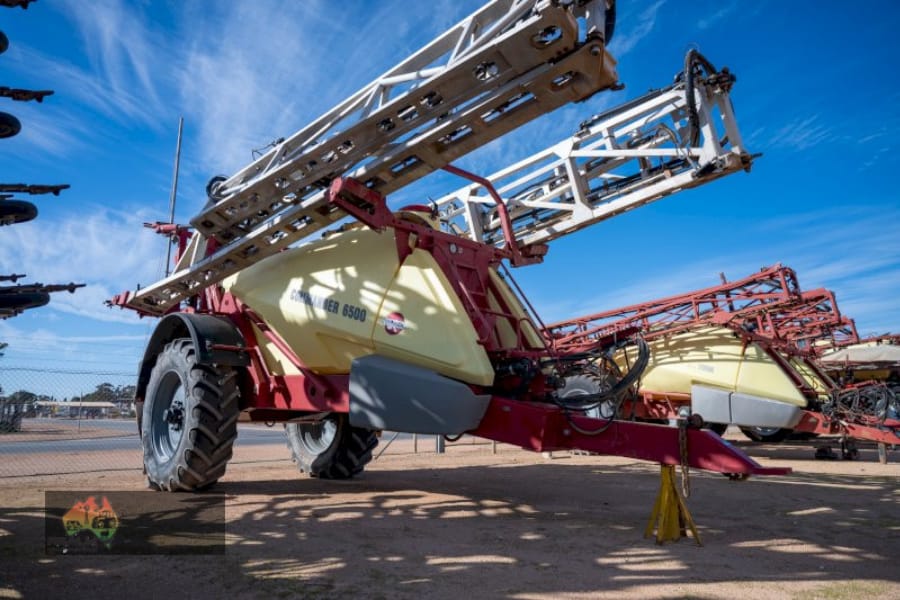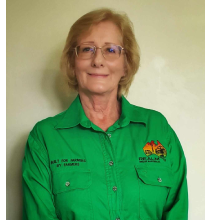- REALM Group Newsletter
- Posts
- REALM Group Australia Newsletter RGA W/E- 25/07/25
REALM Group Australia Newsletter RGA W/E- 25/07/25

F E A T U R E D
ARTICLE 908
Farmers launch legal challenge over controversial gas pipeline proposal
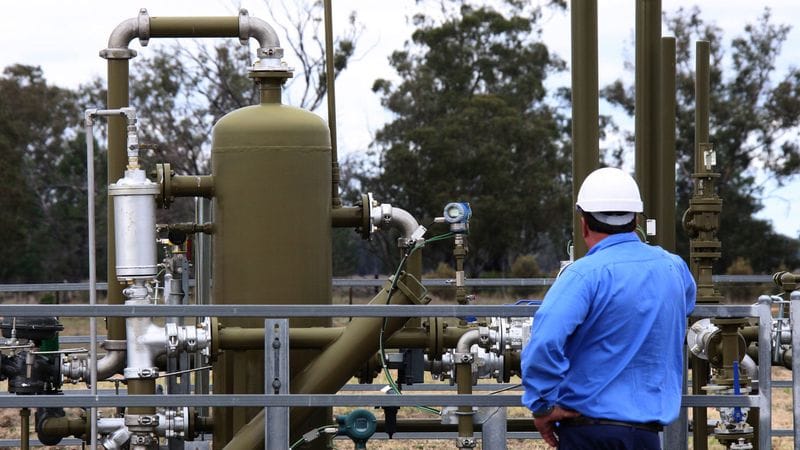
Santos plans to construct a transmission pipeline that would connect its Narrabri gas project to the Hunter gas pipeline. (Rob Homer)
A group of farmers has launched a legal challenge over a controversial proposed gas pipeline that would cut through prime agricultural land, arguing the federal government failed to protect water resources.
Energy giant Santos plans to construct a 60km transmission pipeline that would connect its Narrabri gas project, in north-west NSW, to the Hunter gas pipeline, allowing delivery to the east coast domestic market.
The steel line would be developed on farmland, the Pilliga forest, and on various public sites, according to the company's documents being assessed by the federal environment department.
The department in February ruled the construction of the pipeline was a "controlled action", meaning it would need approvals under environmental protection laws.
But it did not apply the water trigger - an additional safeguard that would require scrutiny of risks to water resources - because the pipeline was not deemed integral to the extraction of gas from the Narrabri project.
More than 140 public submissions argued the water trigger should be applied, in part due to the pipeline's proximity to the Namoi River and the Murray-Darling catchment.
The government's ruling said the pipeline was "unlikely to significantly impact those waterways" and their links to threatened species and ecological communities.
A group of farmers and community members called the Mullaley Gas and Pipeline Accord on Monday filed an application in the Federal Court for a judicial review of the water trigger decision.
"The farms and families in this region are utterly dependent on clean, reliable water," the group's spokesperson, Noni Wells, said in a statement.
"We're going to court because every decision that could put water at risk must be assessed with the care it deserves."
The group is backed by the legal organisation Environmental Justice Australia.
The Narrabri gas project was granted state planning approval in 2020 to extract gas from up to 850 wells across 95,000 hectares of land.
The $3.6 billion project has been wrapped up in complex environmental and heritage approvals processes for years, including challenges from the Gomeroi people.
In late May, the Native Title Tribunal ruled the land leases should be granted, finding there was significant public interest in the project if all the gas produced is supplied to the domestic market.
Pay In-Time Finance
Rate Hold Surprises the Market — But Opens a Window for Smarter Agri Finance Decisions
As we move deeper into July, the new financial year is already delivering curveballs. Despite widespread market expectations, the Reserve Bank of Australia held the cash rate steady this month — a decision that’s caught some off guard but is also reshaping the conversation around finance planning in the agri sector.
Many agribusinesses had anticipated a cut to give them breathing room. Instead, the RBA cited sticky services inflation and a still-warming economy as reasons to stay the course. While disappointing to some, the rate pause doesn’t spell trouble — in fact, it might offer farmers and rural operators something even more valuable: a moment to pause and plan properly.
At ground level, confidence is quietly lifting in key growing regions. Winter rain has landed well in many cropping zones, boosting early-season outlooks for wheat, barley, and canola. Meanwhile, livestock prices — particularly for cattle — are holding firm, and dairy continues to provide stable returns with forward farmgate pricing remaining strong. These conditions are giving producers something rare: breathing space to think strategically about their finances rather than reactively.
In the finance world, this steady-rate environment is shifting focus away from chasing the lowest interest rate and toward optimising the structure of loans. Cash flow matching, redraw flexibility, seasonal repayment breaks — these are now front of mind for borrowers looking to get ahead before spring. As lenders become more conservative in response to global uncertainty and market volatility, the quality of an application — not just its headline rate — is what’s driving approvals.
This shift is something we’re seeing up close at Pay In Time Finance. Clients are asking better questions: Should I refinance now, or wait? Should I lock in flexible terms, or chase fixed? What’s the best way to fund equipment before harvest? And more often than not, the answers depend on understanding not just numbers, but cycles — weather, cash flow, asset turnover, and personal risk appetite.
Even without the rate cut, there’s movement beneath the surface. Rising unemployment figures (up to 4.3% in June) are creating renewed pressure on the RBA to act in August. Economists are now split, with many tipping a cut within the next two months — but no one’s betting too heavily either way.
For farmers, this means opportunity — but only if approached with strategy. Those who use this stable window to rework loan terms, boost their working capital buffers, or position themselves for machinery purchases could come out stronger when the next shift inevitably comes.
Because, as always in agriculture, timing is everything.

WEEKLY AUCTION DATES – 2025
1.) 25th July 2025 2.) 08th August 2025 3.) 22nd August 2025
Ag Machinery
Emerging Trends in Farm Equipment for 2025
The farm equipment sector is undergoing a significant transformation, driven by technological innovation, market dynamics, and sustainability concerns. As we look toward 2025, emerging trends promise to reshape farming practices and the agricultural machinery market. Here's an in-depth look at the key developments shaping the future of farm equipment.
Trends in Farm Equipment for 2025
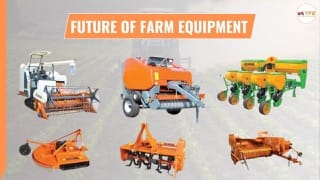
Technological Integration
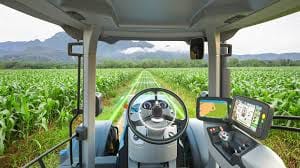
Advanced technologies are becoming integral to modern farm equipment, enhancing accuracy and efficiency. Companies like John Deere are leading the way with innovations such as the Furrow Vision retrofit for planters, which will be available in 2025. This technology improves planting precision, ensuring optimal seed placement and reducing waste.
Additionally, autonomous tillage solutions are under development, potentially revolutionizing how fields are prepared for planting. By automating labor-intensive tasks, these advancements empower farmers to manage larger areas with reduced manual effort.
For farmers, technological integration means higher productivity and better resource management, laying the groundwork for smarter agriculture.
Electric and Autonomous Farm Equipment
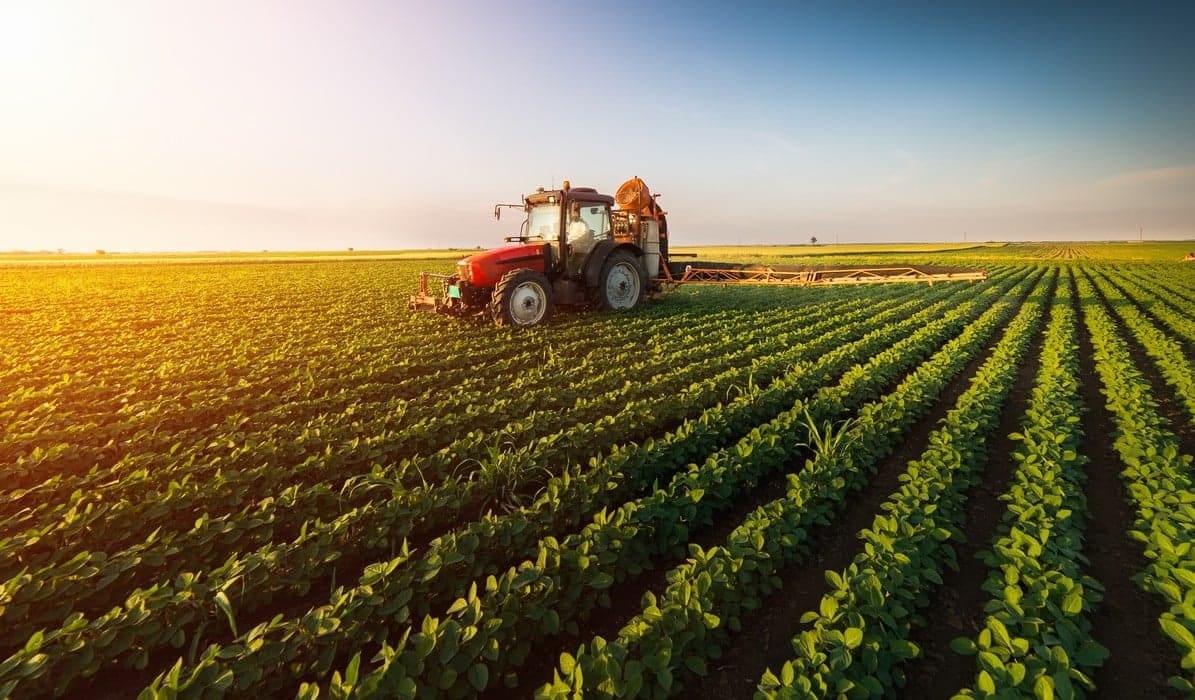
The shift toward electric and autonomous machinery is accelerating. Kubota's New Agri Concept exemplifies this trend with its fully electric multi-purpose vehicle, equipped with real-time monitoring and AI capabilities. These features enable the identification of potential issues, reducing downtime and improving operational efficiency.
Bobcat’s AT450X, an autonomous electric tractor, is another game-changer. Designed for specialized tasks in vineyards and orchards, it demonstrates how niche farming needs are driving tailored solutions.
The adoption of such equipment highlights the industry’s commitment to reducing environmental impact while addressing labor shortages. Farmers can expect machines that are both eco-friendly and cost-effective in the long term.
Market Growth Projections
The global agricultural equipment market is set to expand significantly, with projections suggesting it could reach $342.67 billion by 2037, up from its current valuation of $170.84 billion. This represents a compound annual growth rate (CAGR) of approximately 5.5%.
This growth is fueled by rising food demand and the need for more efficient farming methods to meet the challenges of feeding a growing population. Emerging markets, particularly in Asia and Africa, are expected to drive demand as they adopt modern farming practices.
For farmers, this expansion signals increased access to innovative tools and technologies that can revolutionize their operations.
Shift Towards Larger and More Efficient Machines
Efficiency is becoming a cornerstone of modern farming, driving demand for larger, more capable machinery. High-capacity equipment, such as Class 10+ combines, is gaining traction among farmers seeking to boost productivity.
Simultaneously, there is a growing market for compact tractors, designed for small-scale operations. These machines cater to the diverse needs of farmers, particularly in regions with fragmented land holdings.
This dual trend underscores the industry’s ability to cater to both large-scale commercial farming and smaller, niche operations, ensuring inclusivity and adaptability.
Economic Pressures Affecting Sales
Despite a promising growth trajectory, the farm equipment market faces economic challenges. Factors such as low commodity prices and rising operating costs are expected to cause a 2% decline in new equipment sales by 2025.
Farmers are likely to adopt a cautious approach, prioritizing maintenance and repairs over new purchases. This trend will drive demand for parts and services, allowing them to extend the lifespan of existing equipment.
For the industry, this shift highlights the need to focus on affordability and value-added services to support farmers during economic downturns.
Increased Focus on Sustainability

Sustainability is at the forefront of modern agricultural practices, influencing the design and functionality of farm equipment. Manufacturers are responding by developing tools that reduce environmental impact.
Precision farming technologies, for instance, optimize resource use by applying inputs like fertilizers and pesticides with surgical accuracy. This minimizes waste and enhances soil health, promoting long-term agricultural viability.
Sustainable machinery not only helps farmers comply with environmental regulations but also reduces operational costs, making it a win-win proposition.
Rental and Leasing Models
Financial constraints are reshaping how farmers access modern equipment. Rental and leasing models are gaining traction as cost-effective alternatives to outright ownership.
These models enable farmers to use advanced machinery during critical seasons without incurring high upfront costs. This is particularly beneficial for small-scale farmers who may not require equipment year-round.
Rental services also provide flexibility, allowing farmers to adapt to changing needs and technologies without the long-term commitment of ownership.
Aftermarket Services Growth
With new equipment sales slowing, the focus is shifting toward aftermarket services, including parts, maintenance, and repairs. Dealers anticipate strong growth in this segment as farmers invest in maintaining their current machinery.
This trend underscores the importance of robust service networks and the availability of quality spare parts. For farmers, it offers a cost-effective way to keep their equipment operational, ensuring minimal disruption during critical farming periods.
The Road Ahead
The farm equipment sector is navigating a dynamic landscape shaped by innovation, economic realities, and sustainability imperatives. The trends outlined here paint a picture of an industry that is both adapting to challenges and seizing new opportunities.
For farmers, these developments promise improved productivity, reduced costs, and greater access to advanced technologies. Whether through the adoption of electric and autonomous machinery, leveraging rental models, or focusing on sustainability, the future of farm equipment is geared toward making agriculture more efficient and sustainable.
As we approach 2025, one thing is clear: the farm equipment market is not just evolving—it is setting the stage for a more resilient and innovative agricultural future. Farmers, manufacturers, and policymakers must work together to ensure these advancements translate into tangible benefits for the global farming community.
For Sale Listings (List it for FREE!)
Inputs, Commodities & Our Future
Pathway to a $30 billion ag sector by 2030

NSW Farmers’ CEO Pete Arkle says 30 by 30 is an ambitious but important aspiration as we enter an age of targets and ideals.
Farmers have identified improving business resilience and environmental performance as key on-farm priorities to help double agricultural output in NSW in the next eight years. Hovering between $12 billion and $15 billion annually, the agriculture sector makes a mammoth contribution to the NSW economy. But NSW Farmers thinks those figures pale in comparison to the sector’s potential, which the Association says we can achieve a $30 billion ag sector by 2030.
To help map the 30 by 30 pathway, NSW Farmers has teamed up with the Future Food Systems Cooperative Research Centre and the University of New England to conduct a survey of farmers on the future of farming in NSW. The survey is part of an aptly named Putting Farmers at the Centre joint project that seeks to understand the 30 by 30 goal from the most important perspective, the farmers of NSW.
Survey analysis was ongoing at the time of writing, but early results indicate that farmers see opportunities to support their farm’s resilience and environmental goals.
These include improving freight and logistics infrastructure, increasing access to domestic and international trade, improving internet connectivity, and developing regional processing hubs and value-adding enterprises.
While world leaders were touting net-zero targets at COP26 in Glasgow, farmers were also thinking about carbon farming opportunities as another means to support the growth of agriculture.
NSW Farmers CEO Pete Arkle says 30 by 30 is an ambitious but important aspiration as we enter an age of targets and ideals. Goals such as net zero emissions are deservedly in the spotlight, but in the mounting discourse and hype, there’s another global imperative we cannot forget about: food security, Pete says.
The 30 by 30 aspiration is therefore not just economic. Pete says it is about fostering the sustainable growth of one of Australia’s most important sectors, and about committing to the provision of quality food and fibre as the global population bulges to a projected 8.5 billion by the decade’s end.
Professor Derek Baker, the project leader at the University of New England, noted the relationship between farm goals, opportunities for growth, and actions farmers are already taking in their business to meet their goals.
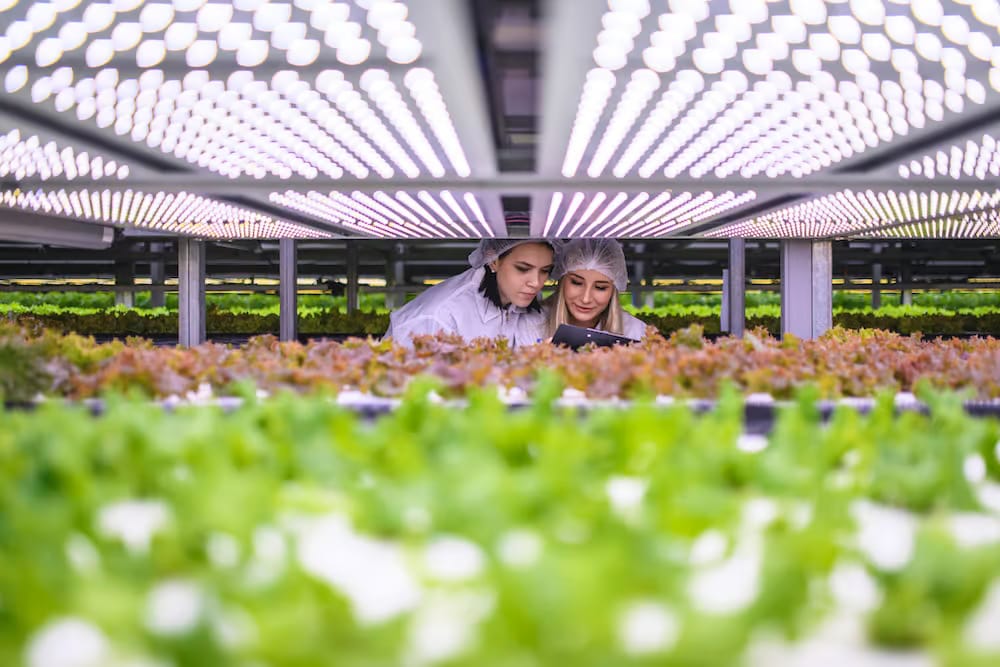
Alternative practices such as hydroponic or vertical farming are becoming more common in the modern world.
As well as areas of ongoing development such as workforce training, trade opportunities, and freight and logistics infrastructure, farmers are increasingly aware of challenges and opportunities in digital connectivity, regional value-adding, and meeting the demands of climate change, Derek says.
The next stage of 30 by 30 input from farmers for the Putting Farmers at the Centre project will come from focus groups.
We’ll need farmers to join in small focus groups across NSW for a structured review of the survey findings to gather ideas to drive the 30 by 30 goal and increase the rate of adoption of Future Food Systems CRC program outputs, Derek says.
Several farmer focus group sessions will be held in February and March 2022.
Value-adding our way to 30 by 30
The Future of Farming survey results show a clear recognition of the opportunities lying in local processing and value-adding.
Farmers see a range of benefits from value-adding, minimising waste to maximising business profit, and the retention of value from food and fibre as part of production in regional communities.
In a report authored by the Australian Farm Institute (AFI) and commissioned by NSW Farmers, regionally based processing is identified as part of the pathway to a stronger agriculture sector and stronger regions.
Released in October last year, the Stronger Ag Stronger Regions report points out that manufacturing near food production offers significant logistical and efficiency advantages to the agri-food sector, while bringing more jobs to the regions.
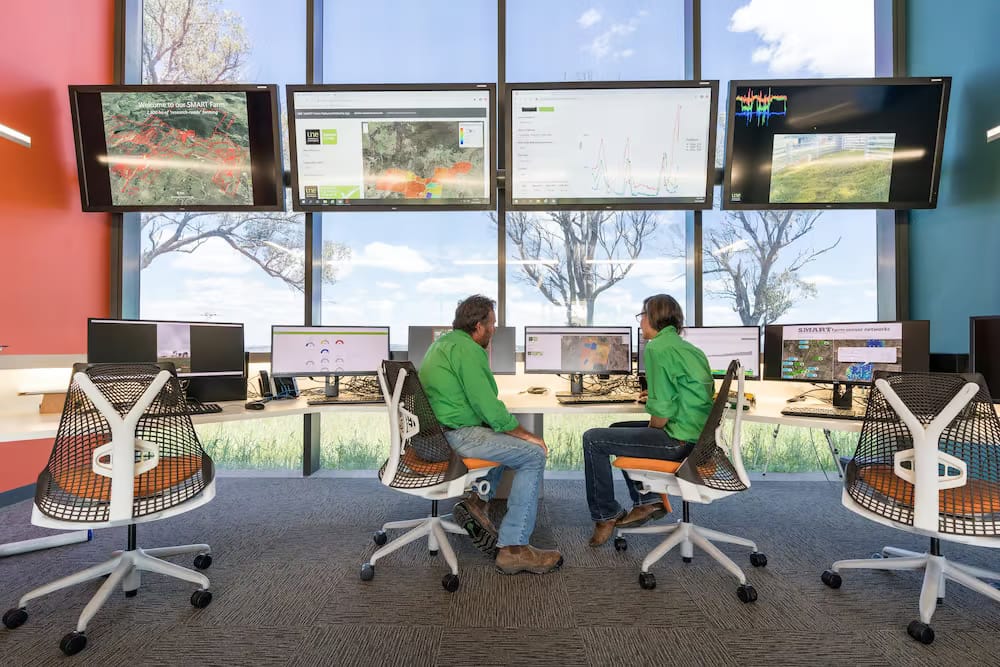
Researchers at the University of New England (left) are conducting research into the future of farming in NSW. The survey is part of the joint project Putting Farmers at the Centre with NSW Farmers
While the government has an important role to play in kick-starting these value-adding projects in regions via grants, tax incentives, planning laws, and the provision of infrastructure, long-term private investment will be crucial to ensure sustainability, the report states. Pete Arkle says he hopes the report will prompt governments to further invest in rural and regional communities and the future of agriculture.
Value-adding and investment in regional processing is a win-win situation. It also enables farmers and other members of food and fibre supply chains to capitalise on growth trends.
NSW Farmers CEO Pete Arkle
According to research by the Commonwealth Growth Centre for Food and Agribusiness Ltd (FIAL), a growing appetite for healthier convenience meals is one of those trends. FIAL has projected massive growth in demand for goods with verified nutritional and quality attributes, with most of the new demand in Asia.
Food Innovation Australian Limited predicts that by 2025:
The global market for foods catering to demand such as trusted, new foods, Indigenous foods, and nutritious convenience meals is projected to be worth $2.7-$3.6 trillion per year.
The health and wellness category, which includes plant-based protein, organic foods, and foods catering to those with allergies and on special diets, is forecast to be worth $3.4 trillion per year.
The emerging market for targeted eating product reformulation to reduce fat and sugar content, functional or fortified foods, and personalised products designed to address specific? The nutrient needs and health concerns are projected to be worth $690-$770 billion per year.
Green pathway to 30 by 30
Another key part of the 30 by 30 equation is the question of how farmers will be supported in meeting the challenges of climate change.
Participating in carbon markets and environmental stewardship schemes has emerged as a priority area for farmers, who are at the coalface of climatic variation and stand to be impacted by inaction more than most.
Pete stresses that growing the agriculture sector does not need to be at the expense of lowering emissions; if anything, the 30 by 30 survey results indicate an appetite in farmers to adopt measures that reduce emissions and grow the farm business at the same time. What is key, he says, is that agriculture is not inequitably targeted in national efforts to reach carbon neutrality.
The Technology not Taxes plan for reaching net zero carbon emissions by 2050, touted by the Coalition government, has put soil carbon and renewable energy in the spotlight.
According to Minister for Energy and Emissions Reduction Angus Taylor, the carbon-storing capacity of soil presents a great opportunity for Australian farmers, if the cost of measurement can be minimised.
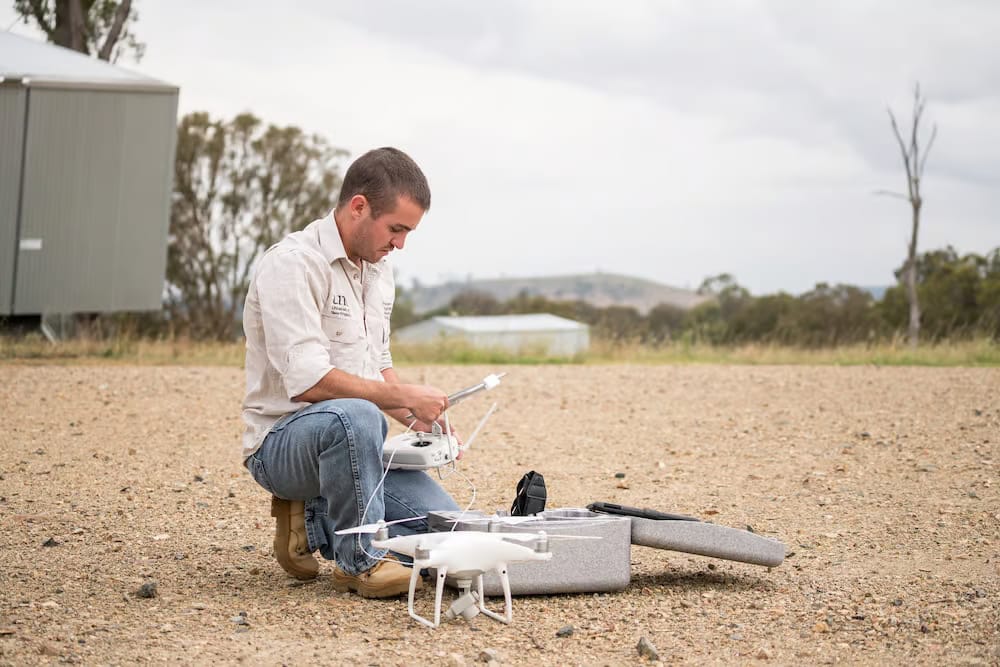
Drones are another way that farmers can lower fuel consumption on farms, as monitoring of crops can be done from afar.
Last September, Minister Taylor released the Federal Government’s Technology Investment Roadmap, which highlighted soil carbon as one of five priority technologies to benefit from $18 billion of government investment.
Minister Taylor said the roadmap sets a goal of reducing the cost of measuring soil carbon by around 90 per cent, to less than $3 per hectare per year.
Pete says that the energy transition can also benefit farmers and regional communities if the right foundations are put in place. Lower energy prices, diversified energy sources, and more jobs for regional communities are some of the projected upsides of renewables in regional NSW. But he warns that our best and most strategic agricultural land must be identified and protected lest it be lost for good to renewable energy infrastructure, including transmission lines.
Technology: The big 30 by 30 disruptor
The ability to adopt new technology will have a disruptive effect on a wide range of industries, including agriculture.
In the Stronger Ag Stronger Regions report, AFI has predicted that the full adoption of digital technology could increase Australian agriculture’s economic output by about 25 per cent, or $20.3 billion.
But this eye-watering figure comes with a catch: rural and regional communities must overcome access, affordability, and skill constraints to unleash the potential of technology.
With McKinsey and Telstra digital indices ranking agriculture as the sector with the lowest digital capability, there is a lot of work to be done.
Young Farmers on the rise
Young farmers may only make up a small proportion of the farming population, but they will pack a punch when it comes to helping meet a production target of $30 billion by 2030.
That’s according to Mitch Highett, a young farmer from the Central West and chair of the NSW Young Farmers Council. Our age bracket is very punchy when it comes to productive management of farms, Mitch says.

Alternative practices such as hydroponic or vertical farming (top), renewable energy generation such as wind turbines (top right), and eating plant-based food such as the Earth range of plant-based frozen meals by the founder of Coco & Lucas, have been identified as target areas for meeting the 30 by 30 goal
Because of the large capital investment needed to buy a farm, many of the young farmers of today have off-farm income through working in the Ag sector, so they are bringing a range of skills to grow the farm business.
Those who are coming in from a non-farming background also bring different business skills and ideas, and are willing to invest in their farms to improve production and environmental incomes.
According to the Trends in the Australian Agricultural Workforce, Nov 2020 ABARES report, around 10 per cent of Australian farm owner-operators in 2016 were under 35 years of age.
More recent data is not available, but farming groups like NSW Farmers and the National Farmers Federation are hearing anecdotal reports of more young people taking on the challenge of making a living off the land.
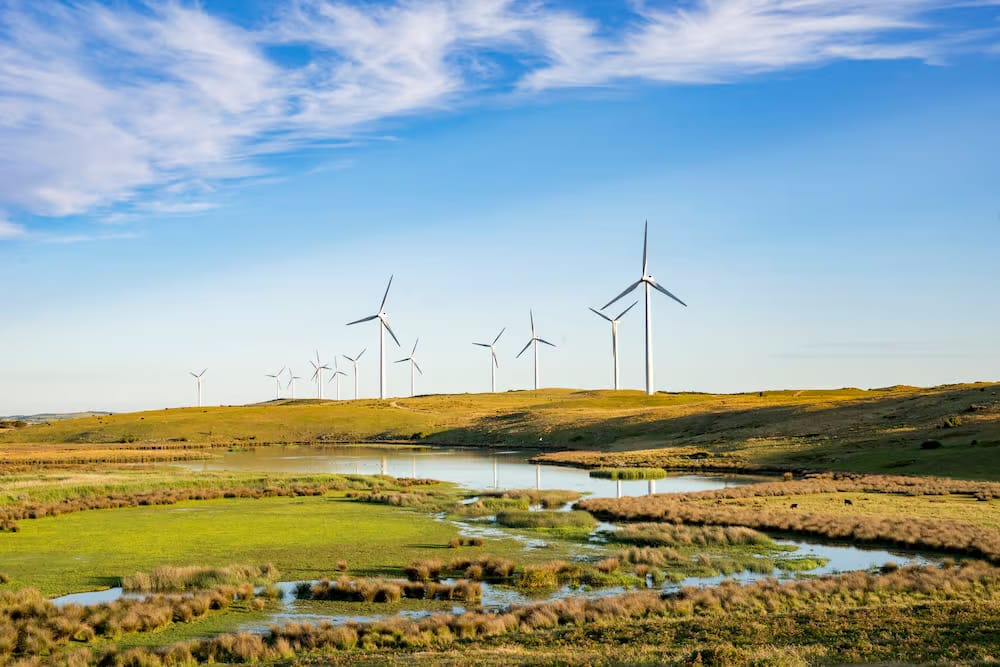
Wind farms across the country are creating more clean energy.
Some are returning to the family farm, and some are newcomers wanting a nature escape or tree change after extended lockdowns in Sydney, Canberra, and Melbourne.
Mitch says an increase in new landowners presents an opportunity for young farmers to expand their business or a pathway to purchasing a farm.
Some of the new owners are happy to enjoy the peace and lease out land to farmers like myself to graze livestock and build the capital to buy a farm.
Mitch runs his own farm management business and has adopted leasing and agisting arrangements for fattening beef cattle as final stepping stones to reaching the goal of owning a farm.
With farmland prices experiencing the same steep increase as real estate in regional towns, Mitch says purchasing your first farm is a daunting task.
It takes a huge capital investment for a young farmer to purchase land and transform it into a business that supports a family. You also have to have the capital reserve to face the first drought, flood, fire, or mouse plague.
Even if you inherit a generational farm, there are still huge costs in running the business and adjusting it to new markets.
That’s why the NSW Young Farmers Council is advocating for first-time farm buyers to be exempt from stamp duty as one support measure in managing the risk of buying a farm.
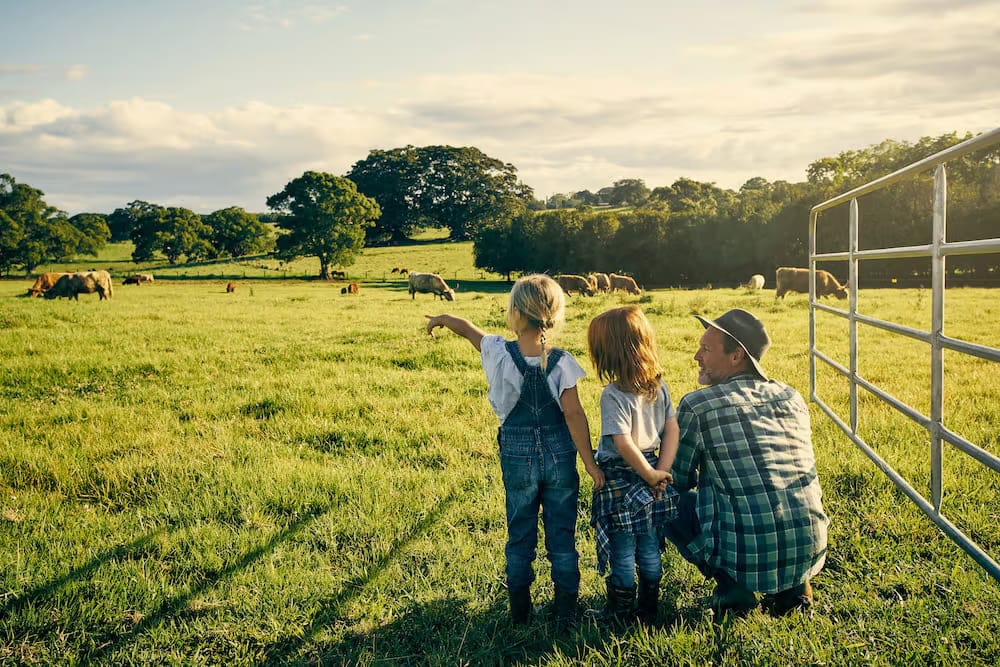
With farmland prices experiencing the same steep increase as real estate in regional towns, purchasing your first farm is a daunting task, but many young families are leaping.
The council, which consists of eight young farmers from across the state, has its sights set on several policy initiatives to assist with farm start-ups for young people.
We want to lead discussions with the state and federal government and relevant industry stakeholders to provide young farmers with affordable and sustainable start-up finance.
The Council also supports continued funding for the Young Farmer Business Program to enhance the upskilling of young farmers to increase farm business profitability.
A lot of our work is around assisting young farmers to be bank-ready to purchase a farm, and to take part in exciting times ahead for local food and fibre production, says Mitch.
Featured Auction Listings
RGA - REALM GROUP AUSTRALIA - MULTI-VENDOR MACHINERY AUCTION, AUSTRALIA WIDE
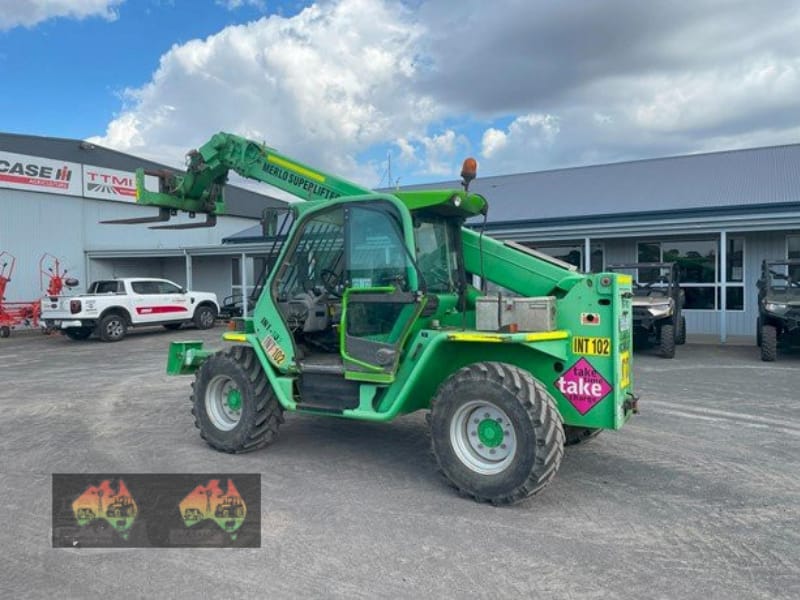 (8998) 2007 Merlo P38-13 Telehandler ( Note NO BUYERS’ PREMIUM ON THIS LOT ) |
We’re now taking listings for our next up-and-coming auction.
Contact us today!
AG NEWS AUSTRALIA
CONGRATULATIONS ROBBIE McKENZIE, CEO REALM GROUP AUSTRALIA JUNE 2025 FLUXX AWARD - SUSTAINABILITY LEADER OF THE YEAR
 |   |   |

In June 2025, REALM Group CEO Robbie McKenzie attended the 2025 FLUXX Awards in Hong Kong.
The FLUXX Awards celebrate global excellence and bring together some of the world’s most elite professionals, forward-thinking innovators, and influential leaders, with a reputation for setting benchmarks in business, healthcare, technology, sustainability, and social impact.
These awards recognize the achievements of those who push boundaries and drive positive change, and are one of the most prestigious global events celebrating excellence across various industries, and are recognized as a symbol of innovation, leadership, and impact. The FLUXX Awards honour individuals and organizations that have demonstrated outstanding achievements in their respective fields.
Please join me in congratulating Robbie on this massive achievement. His hard work, dedication, and tireless effort have led him to this well-deserved success.
Anne Watkins,
REALM Group Australia
Administration

Simply click www.payintime.com.au to provide your details, and we will be in touch. It all starts with one phone call.
YOUR TOWN
We Have Been to Your Town! We don’t just sit in an office; we are hands-on with our Farmers! 🙌
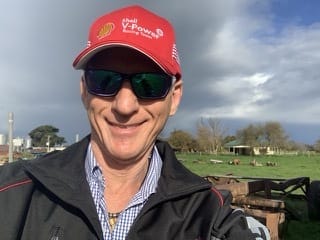 | 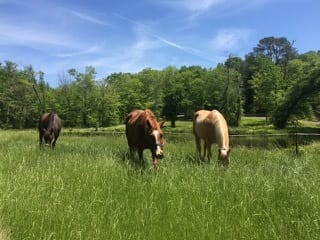 |
Please email us with a picture of yourself or a family member in front of your TOWN-SIGN to [email protected]

Women in Ag
Welcoming Amanda Burchmann – A Strategic Long-Term Venture with REALM Group Australia

Animal Welfare in Livestock - A Responsibility, Not a Choice
As more Australians step into small-scale farming and livestock ownership, it's vital we highlight one of the most critical—and often misunderstood—aspects of the job: animal welfare.
👉 Animal Welfare – What It Is, Why It Matters, and How We Can All Contribute. This is a must-read for anyone working with cattle, sheep, or goats—whether you’re new to the paddock or a seasoned hand looking to stay current.
Unlike domestic pets, livestock care carries industry requirements, legal responsibilities, and welfare standards that every producer—no matter the scale—must follow. Animal welfare isn’t just about kindness (though that’s essential); it directly impacts productivity, market access, compliance, animal wellbeing, and your reputation as a producer.
In this week’s feature, Amanda Burchmann from JAB Agri Solutions breaks down what animal welfare means in real terms, why it matters, and how producers of all sizes can do their part.
🔗 Read the full article here:
https://www.jabagrisolutions.com.au/knowledge/wkphf0zcxci5ocq1xxjb7kpihopjhg
From the Five Freedoms to practical, everyday actions on-farm, this article is a timely reminder that doing the right thing by your livestock is doing the right thing by your business—and the broader industry.
Kind Regards,
Amanda Burchmann
Livestock Production & Industry Development Specialist
Founder | Advocate | Producer
📞 0408 847 536
📧 [email protected]
🌐 www.jabagrisolutions.com.au
“Samantha Watkins Photography”
REALM Group Australia is proud to sponsor amateur photographer Samantha Watkins. We've seen her photography skills grow tremendously over the years, and we believe it's the perfect time for her to step into the photography world.

Click on the link to take you to her FB photography page, where you can see her beautiful photos.
It is called "Samantha Watkins Photography" https://www.facebook.com/profile.php?id=61573116870308

Samantha Watkins's sample photography.
All photos are available for purchase – simply email [email protected]
And she will be happy to assist you.

Active & Upcoming AUCTION!
(Under Auction Listings)
Let us know what you have to sell or auction - it’s FREE to List, and FREE to advertise. Please email [email protected]
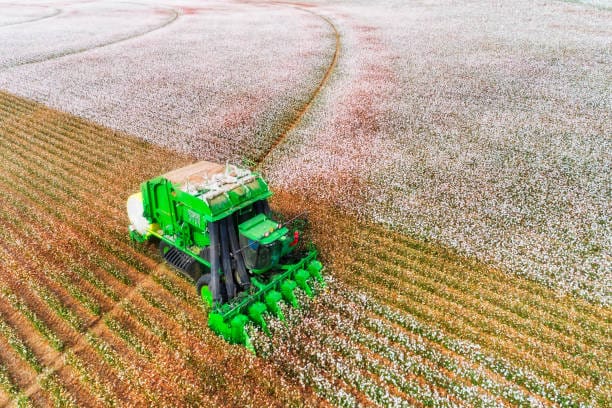

Let us help you with your financial needs. Click Here www.payintime.com.au
Let us help you with your financial needs. Click Here www.payintime.com.au
— Robbie McKenzie

Realm Group Australia
REALM Group Australia (RGA) - originally est. 1992. The most trusted online Ag Marketing System in Australia. Built by Farmers for Farmers! Education is the KEY. True Pioneers - We were the first, and we are still growing. Proud Supporters of the Royal Flying Doctor Service (RFDS) & Ronald McDonald House Charities (RMHC)
